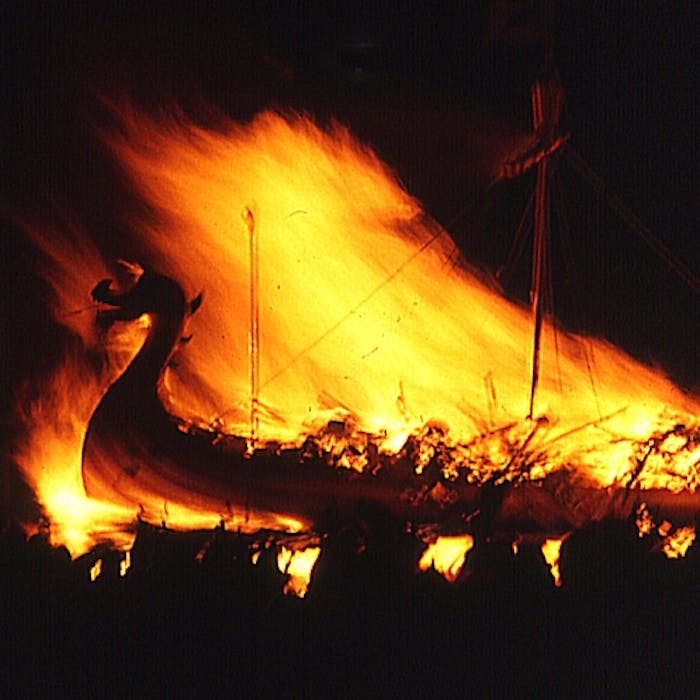
Up Helly Aa - Shetland's annual fire festivals
Up Helly Aa is a fire festival held annually from January to March in various communities in the Shetland Islands, Scotland to mark the end of the Yule season. The largest festival is held in Lerwick, Shetland's capital.
Each festival involves a torchlit procession by groups of costumed participants (known as guizers) that culminates in the burning of an imitation Viking galley.
The Lerwick Up Helly Aa is held on the last Tuesday of January. This northern Mardi Gras, run entirely by volunteers, lasts one day (and all the following night).
It takes several thousand people 364 days to organise the event. Much of the preparation is in strictest secrecy. The biggest secret of all is what the head of the festival, the 'Guizer Jarl' (representing the Viking chief), will wear and which character from the Norse Sagas he'll represent.
On the evening of Up Helly Aa Day, almost 1,000 heavily-disguised men, in groups, known as ‘squads’, form ranks in the darkened streets of Shetland’s capital. Only the lead, or Jarl Squad, wear Viking dress. The rest are in costumes ranging from the sublime to the ridiculous.
Each guizer shoulders a stout fencing post, topped with paraffin-soaked sacking. On the stroke of 7.30pm, a signal rocket bursts over the Town Hall. The torches are lit, the band strikes up and the blazing procession begins, snaking half a mile astern of the Guizer Jarl, standing proudly at the helm of his doomed replica longship, or 'galley'.
It takes half an hour for the Jarl's squad of Vikings to drag him to the burning site, through a crowd of 5,000 spectators or more.
The guizers circle the dragon ship until the Jarl leaves his ship, to a crescendo of cheers. A bugle call sounds, and then the torches are hurled into the galley.
As the inferno destroys four months of painstaking work by the galley builders, the crowd sings 'The Norseman's Home'.
Other towns and villages in Shetland have similar traditions, with partying continuing throughout the night.
Though it appears ancient, the festival is actually Victorian in origin - encouraged as an originally teetotal replacement for the dangerous custom of "tar barrelling" at this time of year.
Further reading
Links to external websites are not maintained by Bite Sized Britain. They are provided to give users access to additional information. Bite Sized Britain is not responsible for the content of these external websites.
